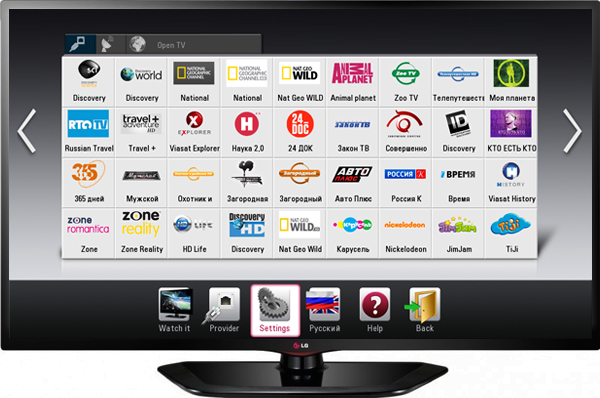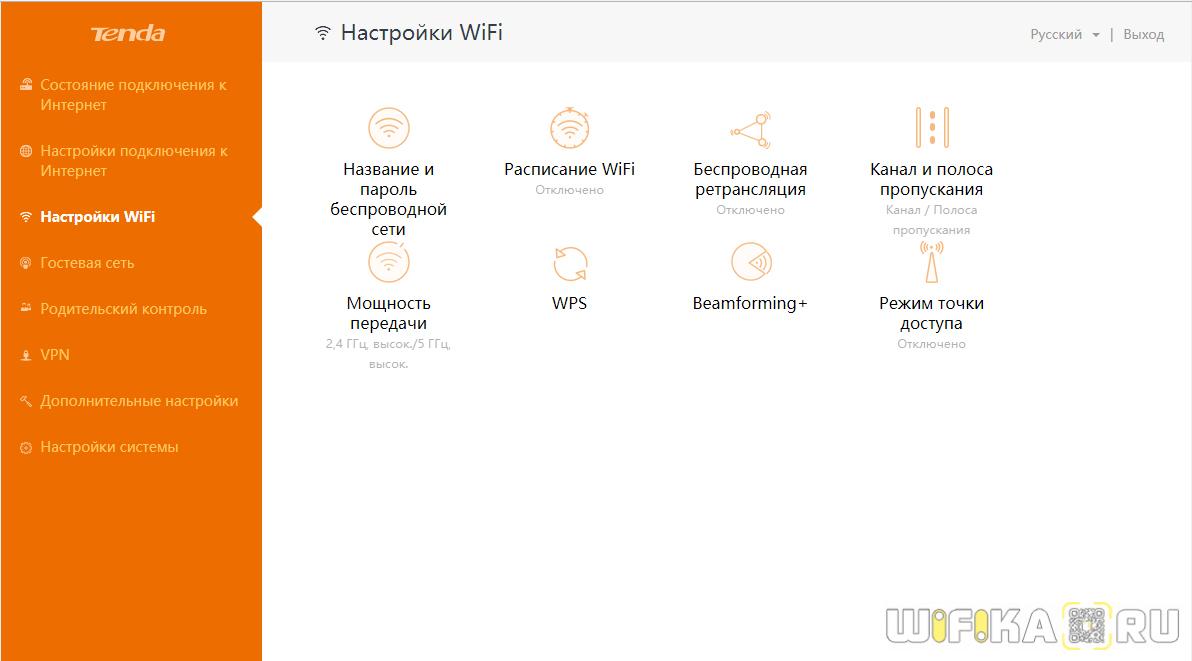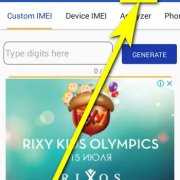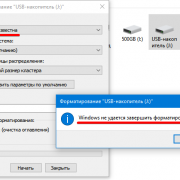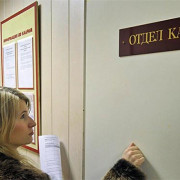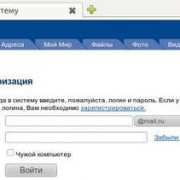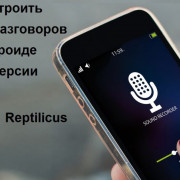Настройка vlc player для просмотра iptv: пошаговая инструкция
Содержание:
- Конвертация видеофайлов
- Other control interfaces
- Streaming
- Плеер VLC – запись видео
- Video Codecs
- Transcoding
- The Mozilla plugin
- The HTTP interface
- VLC Download
- Keyboard shortcuts in the Windows (DirectX) video output
- Плеер VLC – загрузка и просмотр видео из сети
- История создания и развития VideoLAN Organization
- Работа с распространенными протоколами и форматами
- Просто лучший бесплатный многоформатный медиаплеер
- Плеер VLC – аудио функции
Конвертация видеофайлов
VLC удобно использовать в качестве видеоконвертера. Особенно эта возможность пригодится для файлов крупных размеров, которые неудобно конвертировать онлайн. Так, плееру по силам преобразовать целый фильм. Но стоит сказать, что этот процесс не будет быстрым.
В программе не указано, какие типы видео она принимает для конвертации. Но в качестве выходного файла вы можете выбрать такие форматы, как MP4, Webm, ASF, TS и другие. Чтоб конвертировать видео с помощью VLC, сделайте следующее:
- Нажмите «Медиа» → «Конвертировать/сохранить».
- Воспользуйтесь кнопкой «Добавить» и выберите видеофайл, который хотите конвертировать.
- Кликните «Конвертировать/сохранить».
- В списке «Профиль» найдите выходной формат.
- Нажмите «Обзор», введите имя будущего видеофайла и выберите папку для его хранения. Затем кликните «Сохранить».
- Чтобы запустить конвертацию, воспользуйтесь кнопкой «Начать».
- Дождитесь, пока временная шкала в плеере не заполнится до конца.
Other control interfaces
VLC includes a number of so-called interfaces that are not really interfaces, but means of. Nevertheless, they are enabled by setting them as interface or extra interface, either in the Preferences, in General/Interface, or using -I or —extraintf on the command line.
Hotkeys
This module allows you to control VLC and playback via hotkeys. It is always enabled by default. You can use hotkeys in the video output window, you can’t in the audio dummy interface.
Hotkeys can be hacked by:
% vlc --key-<function> <code>
Code is composed by modifiers keys (Alt, Shift, Ctrl, Meta,Command) separated by a dash (-) and terminated by a key (a…z, +, =, -, ‘,’, +, <, >, `, /, ;, ‘, \, , *, Left, Right, Up, Down, Space, Enter, F1…F12, Home, End, Menu, Esc, Page Up, Page Down, Tab, Backspace, Mouse Wheel Up and Mouse Wheel Down). Main controls are available from hotkeys, such as : fullscreen, play-pause, faster, slower, next, prev, stop, quit, vol-up, etc. (use the —longhelp option for full list of functions). For example, for binding fullscreen to Ctrl-f, run:
% vlc --key-fullscreen 'Ctrl-f'
The list of the default hotkeys is available here.
RC and RTCI
These two interfaces allow you to control VLC from a command shell (possibly using a remote connexion or a Unix socket).
Start VLC with -I rc or —extraintf rc. When you get the Remote control interface initialized, `h’ for help message, press h and Enter to get help about available commands.
To be able to remote connect to your VLC using a TCP socket (telnet-like connexion), use —rc-host your_host:port. Then, by connecting (using telnet or netcat) to the host on the given port, you will get the command shell.
To use a UNIX socket (local socket, this does not work for Windows), use —rc-unix /path/to/socket. Commands can then be passed using this UNIX socket.
The RTCI interface gives you more advanced options, such as marquee control for the marquee subpicture filter (See filter section).
Ncurses
This is a text interface, using ncurses library.
Start VLC with -I ncurses or —extraintf ncurses.
The ncurses interface
Press h to get the list of all available commands, with a short description.
There is also a filebrowser available for the ncurses interface in order to add playlist items. Press ‘B’ to use it.
The ncurses filebrowser
You can set the filebrowser starting point by launching vlc with the —browse-dir option:
% vlc -I ncurses --browse-dir /filebrowser/starting/point/
Streaming
Streaming using the GUI
Streaming using the GUI is only available on the Qt interface. To stream using the GUI, open VLC, then Media -> Stream:
Launching the Wizard
Select a stream (such as a file, a network stream, a disk, a capture device …) from the «Open Media» dialogs that pops up.
After selecting an item, the wizard is ready to begin
The following streaming methods are available for use with VLC:
- Display locally: display the stream on your screen. This allows you to display the stream you are actually streaming. Effects of transcoding, rescaling, etc. can be monitored locally using this function.
- File: Save the stream to a file.
- HTTP: Use the HTTP streaming method. Specify the TCP port number on which to listen.
- MS-WMSP (MMSH): This access method allows you to stream to Microsoft Windows Media Player. Specify the IP address and TCP port number on which to listen. Note: This will only work with the ASF encapsulation method.
- UDP: Stream in unicast by providing an address in the 0.0.0.0 — 223.255.255.255 range or in multicast by providing an address in the 224.0.0.0 — 239.255.255.255 range. It is also possible to stream to IPv6 addresses. Note: This will only work with the TS encapsulation method.
- RTP: Use the Real-Time Transfer Protocol. Like UDP, it can use both unicast and multicast addresses.
- IceCast: Stream to an IceCast server. Specify the address, port, mount point and authentication of the IceCast server to stream to.
Wizard streaming method
A few caveats:
Select a transcoding profile that fits the codecs and access method of your stream, such as MPEG-TS, MPEG-PS, MPEG-1, Ogg, Raw, ASF, AVI, MP4 and MOV. You can also create or modify profiles by clicking the «Edit selected profile» button next to the selection combobox.
Transcoding options
Select methods to announce your stream. You can use SAP (Service Announce Protocol) or SLP (Service Location Protocol). You must also specify a channel name. The macOS interface also allows you to export the description (SDP) file of a RTP session using the internal HTTP or RTSP server of VLC, or as a file. This can be done using the according checkboxes. The SDP URL text box allows to give the url or destination where the SDP file will be available. There is a text box displays the Stream Output MRL (Media Resource Locator). This is updated as you change options in the Stream output dialog, and can be tweaked by hand if necessary.
Selecting methods to announce the stream
Click «Stream» to start streaming.
Streaming using the command line interface
See also: Documentation:Streaming HowTo/Command Line Examples
If you want to stream using the command line interface instead of the GUI (more control, for example you can specify your own container), you can «sniff» the options the GUI is using by opening up the logger (Tools menu -> message) and setting verbosity level to «2» then doing a stream. It will output debug messages that basically tell you what it is using for command line parameters, then you will take those same parameters and use them on the command line (you may need to add quotation marks around words that have spaces in them, and you may need to add —‘s).
An example is in a unique command line:
C:\Program Files\VideoLAN\VLC>vlc "C:\Users\Public\Videos\Sample Videos\Wildlife.wmv":
sout=#transcode{vcodec=h264,acodec=mp3,ab=128,channels=2,samplerate=44100}:http{dst=:8090/go.mpg}
Плеер VLC – запись видео
Плеер VLC позволяет записывать трансляции, осуществляемые с помощью веб-камеры. Таким образом, вы сохраните, например, файл разговора по Skype. Соответствующие параметры доступны в настройках программы.
После нажатия комбинации клавиш Ctrl + P в окне Простые настройки откройте вкладку Ввод/Кодеки. В разделе Файлы укажите путь сохранения файла. Сохраните настройки, после чего откройте меню Источник (Ctrl + C). На вкладке Устройство захвата в окне Выбор устройства выберите веб-камеру. Нажмите кнопку Воспроизвести и начните запись.
Совет: если в раскрывающемся списке Режим захвата выбрать Экран (по умолчанию стоит DirectShow), вы сможете записывать содержимое экрана монитора, например, для потоковой трансляции игр. В разделе Параметры укажите размер созданного видео. Должно быть не менее 15 кадров/сек, чтобы материал был плавный.
Преобразование видео. Если ваше устройство не справляется с воспроизведением какого-то видео или аудио файла, как правило, это связано с отсутствием поддержки формата, в котором сохранен файл. В таких случаях необходимо конвертировать файл в формат, с которым устройство справится.
Если в системе установлен VLC, то не нужно устанавливать дополнительных инструментов – плеер выполняет такое преобразование.
Для этого используется сочетание клавиш Ctrl + R. Нажмите их и вызовите диалоговое окно Источник. Кнопкой +Добавить выберите файлы для конвертирования. Под кнопкой Конвертировать/Сохранить скрывается выпадающее меню; выбрав опцию Конвертировать, вы откроете ещё одно окно, в котором вы можете указать целевой формат преобразованного файла.
Video Codecs
Widely Used Video Codecs
| Name | FOURCC | Playable | Encoder | library | Comment |
|---|---|---|---|---|---|
| MPEG-1 Part 2 | mpeg, mp1v, mpg1, PIM1 | Yes | Yes | libmpeg2 , ffmpeg | |
| MPEG-2 Part 2 | mp2v, mpg2, vcr2, hdv1, hdv2, hdv3, mx*n, mx*p | Yes | Yes | libmpeg2 , ffmpeg | |
| MJPEG (A/B) | Yes | Yes | ffmpeg | ||
| Divx (1, 2, 3) | DIV1, DIV2, DIV3, mp41, mp42, MPG4, MPG3 | Yes | Yes | ffmpeg | |
| DivX 4, 5, 6 , 3ivx D4, MPEG-4 | DIV4, DIV5, DIV6, col1, col0, 3ivd | Yes | Yes | ffmpeg | |
| MPEG-4 Part 2 (AVP), Xvid | DIVX, Xvid, mp4s, m4s2, xvid, mp4v, fmp4, 3iv2, smp4, … | Yes | Yes | ffmpeg | |
| H.261 | h261 | Yes | Yes | ffmpeg | |
| H.262 | h262 | Yes | Yes | ffmpeg | Same as MPEG-2 Video |
| H.263 / H.263i | h263 | Yes | Yes | ffmpeg | |
| H.264 / X.264
(MPEG-4/AVC) |
h264, s264, AVC1, DAVC, H264, X264, VSSH | Yes | Yes | ffmpeg (decode), x264 (encode) | |
| Sorenson 1 (Quicktime) | SVQ 1 | Yes | Yes | ffmpeg | |
| Sorenson 3 (Quicktime) | SVQ 3 | Yes | No | ffmpeg | |
| DV | Yes | Yes | ffmpeg | ||
| Cinepak | cvid | Yes | No | internal, ffmpeg | |
| Theora | thra | Yes | Yes, violated | libtheora | |
| WMV 1/2 (7/8) | wmv1, wmv2 | Yes | Yes | ffmepg | |
| WMV 3 / WMV-9 / VC-1 | wmv3, wvc1, wmva | Yes | No | ffmpeg | Not all profiles are supported. See DMO. |
| On2 VP3, | VP31, VP30, VP3 | Yes | No | ffmpeg | |
| On2 VP5 | VP50, VP5, VP51 | Yes | No | ffmpeg | |
| On2 VP6 (used by FLV) | VP60, VP61, VP62, VP6F, VP6A | Yes | Yes | ffmpeg | |
| On2 VP7 | VP7 | No | No | ||
| Flash Screen Video | FSV1 | Yes | Yes | ffmpeg | |
| Indeo Video 3 | IV31, IV32 | Yes | No | ffmpeg | |
| Indeo Video 4/5 | IV41, IV51 | Yes | No | libavcodec | |
| Real Video 1.0, 1.3, 2.0 | RV10, RV13, RV20 | Yes | Yes | ffmpeg | |
| Real Video 3.0, 4.0 | RV30, RV40 | No | No | ||
| Dirac | BBCD | Yes | Yes | dirac | |
| Huffyuv / |
Yes | Yes | ffmpeg |
Rarer Video Codecs
| Rare codecs | FOURCC | Decoder | Encoder | library | Comment |
|---|---|---|---|---|---|
| Apple Animation, Graphics, Video, QuickDraw | ‘rle’,’smc ‘,’rpza’, ‘qdrw’ | Yes | No | ffmpeg | |
| SheerVideo | No | No | Professional use, no open source decoders | ||
| CorePNG | ?? | ?? | |||
| MSU Lossless | ?? | ?? | |||
| Snow | Yes | Yes | |||
| Pixlet | ?? | ?? | |||
| Rare codecs (Asus V1, Asus V2) | ASV1, ASV2 | Yes | Yes | ffmpeg | |
| Game Codecs (Some) | Yes | No | ffmpeg | ||
| Tarkin | No | No | |||
| QPEG | QPEG | Yes | untested ??? | ffmpeg |
Transcoding
Transcoding is the process of taking a media file or stream and converting it to a different format or bitrate.
There are two methods for transcoding in VLC: via the GUI (VLC’s default interface) or via the commandline. The term transcode by itself normally refers to converting one media format to another and saving the output to a file (i.e. no streaming involved).
Transcoding using the GUI
One of the methods of transcoding is via the GUI. To access this:
- In VLC, go to «Media >> Convert / Save…» (Ctrl+R).
- Add the input file(s) or stream(s) you want to transcode. Press «Convert / Save».
- In the «Convert» windows specify the destination file name (including file extension — e.g. on Windows «C:\out.mp3»).
- Select the desired codec from the profile list. To check/edit the settings of a given profile press the «Edit selected profile» button. Profiles can also be added/deleted.
- Press «Start».
If the profile settings were compatible and transcoding was successful, a playable destination file should be created.
Using the commandline
Another method of transcoding is via the commandline. This is more flexible than via the GUI as it enables full usage of the modules and options available in VLC.
To use the VLC’s commandline you need to have access to the commandline interface, for example via a shell.
Windows-based systems
On Windows-based systems the Command Prompt can be used. This can be found in the «Accessories» folder of the Start menu. Alternatively by going to «Start >> Run…» or pressing «Windows key + R», entering «cmd» into the text field and press «OK» or Enter.
Once the Command Prompt window is opened navigating to the folder/directory where VLC is located is easiest for using the commandline as only «vlc.exe» or «vlc» (as the .exe part is assumed) needs to entered to run VLC. If VLC is installed in the default location (on a 32-bit system) running:
cd "C:\Program Files\VideoLAN\VLC"
Should change to the directory where vlc.exe is located.
Unix systems
On Unix-based system (such as Linux and macOS) a terminal window can be opened. Running «vlc» should be all that is needed to open VLC:
../VLC.app/Contents/MacOS/VLC
Transcoding commandline string structure
A typical commandline string for converting a file to another format is:
vlc --sout "#transcode{}:std{}" INPUT
Where is the input stream, are the options set for the desired output format, codecs, bitrate etc. and are the option set for the output type. is the stream output commandline option.
Example commandline: Converting an audio file to a MP3 file
An example usage might be converting an audio file to a MP3 file:
vlc --sout "#transcode{acodec=mp3,ab=128,channels=2,samplerate=44100}:std{access=file,mux=raw,dst=OUTPUT}" INPUT
Where INPUT is the input file and OUTPUT is the destination file (for example «C:\out.mp3» on Windows or «/home/username/out.mp3» on a *nix system).
The above sout string is the default «Audio — MP3» profile setting accessible via the GUI. It will convert an audio input to a 128kbps CBR MP3 file (sample rate 44100Hz, 2 channels).
Other examples commandline strings
Convert an audio input to an uncompressed WAVE (*.wav) file:
vlc --sout "#transcode{acodec=s16l,channels=2,samplerate=44100}:std{access=file,mux=wav,dst=OUTPUT}" INPUT
Convert an audio input to an AAC file (MP4 container):
vlc --sout "#transcode{acodec=mp4a,ab=128,channels=2,samplerate=44100}:std{access=file,mux=mp4,dst=OUTPUT}" INPUT
The Mozilla plugin
Install the plugin
GNU/Linux Debian, Ubuntu, etc.
Install the mozilla-plugin-vlc package using your preferred package manager. For example, at the command line enter:
# apt-get update # apt-get install mozilla-plugin-vlc
Windows
Quit Firefox or Mozilla.
Select the Mozilla Plugin option when installing VLC Media Player. The installer will then automatically detect your browser and install the plugin.
Restart Firefox or Mozilla.
Manual Install
Create the directory if it doesn’t exist.
Folders to copy:
- osdmenu
- plugins
Files to copy:
- vlc.exe
- vlc.exe.manifest
- vlc-cache-gen.exe
- npvlc.dll.manifest
- npvlc.dll
- libvlccore.dll
- libvlc.dll
- libvlc.dll.manifest
- axvlc.dll
- axvlc.dll.manifest
macOS
The Mozilla/Safari plugin for macOS is only available from vlc version 0.8.5.1 and onwards.
Quit Safari browser.
Run the installer from the dmg image.
Compile the sources yourself
Use the Mozilla plugin
If in the browser you open a link to an audio or video URL handled by the VLC plugin, or if a web page has HTML code that embeds audio or video handled by the VLC plugin, then the plugin should start and play the audio/video.
Note the plugin (as of version 1.1.9) does not present any user interface — it has no default control panel and no keyboard shortcuts.
To get the list of the media types handled by the VLC plugin, browse to about:plugins.
Conflicts will arise if you have more than one plugin installed that supports the same media type.
See the Web plugin documentation to create HTML pages that use JavaScript to control the plugin.
The HTTP interface
VLC ships with a little HTTP server integrated. It is used both to stream using HTTP, and for the HTTP remote control interface.
To start VLC with the HTTP interface, use:
% vlc -I http [--http-src /directory/]
If you want to have both the «normal» interface and the HTTP interface, use vlc —extraintf http.
The HTTP interface will start listening at host:port (<all interfaces>:8080 if omitted), and will reproduce the structure of /directory at ( vlc_source_path/share/http if omitted ).
Use a browser to go to . You should be taken to the main page.
VLC is shipped with a set of files that should be enough for generic needs. It is also possible to customize pages. See Documentation:Play HowTo/Building Pages for the HTTP Interface.
Available pages for 1.0.3 :
- http://host:port — Main Interface
- http://host:port/vlm.html — VLM Interface
- http://host:port/mosaic.html — Mosaic Wizard
- http://host:port/flash.html — Flash based remote playback
VLC Download
This player supports broad ranges of OS and device, choose your OS and download it here. After downloading and installing it, VLC Download Media Player will launch a procedure that requires very few minutes, you will be faced with a simple and essential program, which does what it promises to do (ie let you watch videos or make you listen to music) without frills and without wasting your time. The most obvious controls are those related to the media, therefore the play, the pause, the rewind, the possibility of seeing a video in full screen, the volume control with lots of equalizers, the possibility to set the automatic replay of the video or audio files, and much more.
Keyboard shortcuts in the Windows (DirectX) video output
See also: QtHotkeys and How to set global hotkeys
Note: these shortcuts are only default settings and can be customized (along with many others). To tweak hotkeys settings, go to Settings->Preferences->Interface->Hotkeys settings
| F | Fullscreen |
| Space | Play/Pause |
| T | Show position (time) |
| S | Stop |
| Ctrl+Q | Quit |
| +/- | Faster/Slower |
| N/P | Next/Previous |
| Shift+Left/Shift+Right | Jump very short |
| Alt+Left/Alt+Right | Jump short |
| Ctrl+Left/Ctrl+Right | Jump medium |
| Ctrl+Alt+Left/Ctrl+Alt+Right | Jump long |
| Ctrl+Up/Ctrl+Down | Volume up/down |
| M | Mute |
| Ctrl+M | Show DVD-menu |
| Left/RightUp/DownEnter | DVD-menu navigation keys |
Плеер VLC – загрузка и просмотр видео из сети
Среди бесчисленных материалов ресурса YouTube каждый найдёт что-то для себя. VLC Media Player позволяет не только воспроизводить опубликованные там материалы непосредственно в окне приложения, но и загружать их копии на жесткий диск локального компьютера.
Чтобы это сделать, скопируйте URL-адрес видео с YouTube, после чего вставьте его в VLC, открыв меню Медиа → Открыть URL (или используйте сочетание клавиш Ctrl + N). Затем подтвердите выбор, нажав кнопку Воспроизвести. Фильм начнет воспроизводиться.
Теперь нажмите клавиши Ctrl + J – это вызовет окно Информация о медиаисточнике, в котором вы узнаете настройки кодека, а в строке Расположение вы найдете путь для скачивания данного фильма. Скопируйте её и вставьте в адресную строку браузера, а затем перейдите к адресу.
Если фильм начнет воспроизводится, то его можно будет скачать и просматривать в автономном режиме (достаточно щелкнуть по нему правой кнопкой мыши и выбрать Сохранить видео как… или нажать кнопку Сохранить в Яндекс.Браузере).
Стабилизация потокового видео. При неустойчивом подключении к интернету или проблемах с сервером могут возникнуть проблемы с воспроизведением материала из интернета. VLC может справиться и с этим. При запуске потокового видео из сети, установите флажок Показать дополнительные параметры.
В окне появится значение Кэширование по умолчанию равное 1000 мс. Можно это значение увеличить, чтобы плеер загружал видео «с запасом» и исключал, таким образом, риск возникновения задержек. Для этого используется текстовое поле Изменение параметров. Укажите там строку :network-caching=1000, где вместо 1000 вы можете ввести большее значение.
История создания и развития VideoLAN Organization
Создание VideoLAN Organization первоначально развило две программы для потоковой передачи мультимедиа, Клиент VideoLAN (VLC) и Сервер VideoLAN (VLS), но большинство особенностей VLS было включено в VLC с результатом, переименовали VLC Media Player.
Проект начался как студенческое усилие в Париже École Centrale (Франция), но после выпуска программного обеспечения под бесплатным программным обеспечением / общедоступная Генеральная общедоступная лицензия GNU, проект теперь многонациональный с группой разработчиков, охватывающей 20 стран.Эти студенты хотели иметь возможность смотреть телевизор на их компьютере.
Они стали писать VLS (серверная Версия) и VLC (Версия клиента) в поток и чтение потоков в форматеMPEG-2. Они успешно служили и читали первый поток в 1998 году. Планировалось, что эти две программы будут модульными, что означало ядро, состоящее в основном из коммуникационных функций, которые будут использоваться модулями. Это позволило легко портировать модули ОС.
В 2001 году, после многих месяцев (если не лет) переговоров, директор школы согласился на изменение лицензии GPL. Разработчики со всего мира начали работать над проектом прямо сейчас. Один из них (гибалу) даже представил порт Win32 6 месяцев спустя!
В мае 2002 года были проведены первые крупномасштабные многоадресные тесты потоковой передачи данных. 500 студентов по сети через сеть VIA Centrale Réseaux смогли принять участие в этих тестах. В январе 2003 года были протестированы первые потоки MPEG-4, а через два месяца появилась возможность кодирования MPEG-4 в реальном времени кодером x264 (бесплатный кодер H264 / AVC инкодера).
Действующим президентом некоммерческой организации VideoLAN, которая поддерживает веб-сайт проекта, является Жан-Батист Кампф, который является также одним из разработчиков проекта.Сейчас же над проектом VideoLAN (клиентская и серверная часть) работает The VLC Team и сообщество разработчиков, проживающих по всему миру.
VLC избегает лицензионных отчислений MPEG LA, так как выпускается некоммерческой организацией из Франции, где не признаются патенты на программные реализации алгоритмов.
Работа с распространенными протоколами и форматами
В зависимости от операционной системы, ВЛЦ плеер работает с разными протоколами и форматами, но распространенные поддерживаются в любом случае. Среди протоколов и форматов стоит отметить такие, как: HTTP, HTTPS, RTP, RTSP, FTP, DVD, VCD, SVCD, Audio CD, Blu-Ray, H.263, H.264, AVI, MP4, MPEG-1, MPEG-2, MPEG-4, WMV, WMA, MP3, WAV, 3GP, ASF, MKV, FLV, AAC, AC3, FLAC, ALAC, DTS, Indeo Video, RealMedia, RealAudio, WavPack, QuickTime, Ogg Vorbis, PVA, VOB и другие. Прочие из форматов могут быть преобразованы с использованием специальных конвертеров, например: распространенный DivX и спутниковый DVB-S. Стоит отметить работу с субтитрами и плейлистами всех актуальных форматов.
Просто лучший бесплатный многоформатный медиаплеер
Если вы хотите воспроизводить видео или музыкальные файлы практически в любом формате, возможно, ваш медиаплеер VLC — это ваш ответ. Эта программа также доступна для iPhone , Android и Mac .
Медиа-плеер и многое другое
Медиаплеер VLC является самым стабильным, гибким и легким аудио и видео плеером сегодня, особенно по сравнению с другими, которые будут играть в необычных форматах после загрузки кодека или просто отказываться от игры.
Программа обрабатывает множество форматов, от MPEG до FLV и RMBV файлов. V10 и многопоточное декодирование для H.264, MPEG-4 / Xvid и WebM, а также возможность воспроизведения HD и BluRay .
Также полезно то, что вы можете использовать медиаплеер VLC для предварительного просмотра файлов, которые вы загружаете, так как он воспроизводит неполные части видеофайлов. Однако медиаплеер VLC предназначен не только для воспроизведения видео . Он также предлагает превосходную интеграцию с потоковыми службами видеоканалов, такими как Channels.com, предоставляя вам доступ к каналам, таким как ESPN , Reuters и National Geographic . Просто щелкните правой кнопкой мыши или нажмите CMD в списке воспроизведения, выберите « Службы обнаружения» и « Каналы» .
Каналы.com затем появятся в вашем плейлисте медиаплеера VLC. Нажмите на нее, чтобы показать различные категории доступных каналов. Нажмите на нужную категорию, и в медиаплеере VLC появится раскрывающийся список всех доступных каналов. Просто нажмите на канал, который вы хотите посмотреть, и потоковое воспроизведение начнется почти сразу.
Как это работает?
Медиаплеер VLC также имеет отличную поддержку горячих клавиш, и если вы потратите время на изучение ярлыков, чтобы его можно было контролировать, не касаясь мыши. Если вы просматриваете DVD-диски или видеофайлы , это не проблема. Для музыки он воспроизводит более или менее любой файл и содержит эквалайзер и создание плейлиста. Медиа-проигрыватель VLC не так интуитивно понятен, как iTunes, как медиа-менеджер, но он гораздо более гибкий в плане форматов файлов. Вы даже можете использовать VLC для конвертирования ваших файлов, а помимо всех форматов и физических носителей, которые будут воспроизводиться, поддерживаются многие потоковые протоколы и карты захвата ТВ.
Медиаплеер VLC упрощает добавление субтитров к вашим видеофайлам — просто добавьте SRT- файл в папку, в которой сохранено ваше видео, и оно будет автоматически воспроизводиться с субтитрами.
Наконец, интерфейс в медиаплеере VLC был несколько улучшен, хотя он остается строго функциональным. Однако вы можете загружать скины, чтобы полностью изменить внешний вид медиа-проигрывателя VLC. Меню настроек является исчерпывающим, но оно не является подавляющим, и в Интернете имеется обширная документация.
Полная и бесплатная
VLC Media Player — это просто самое лучшее мультимедийное приложение для Windows и Mac. Он играет почти все, без проблем — что еще вам нужно? Если вы ищете бесплатные альтернативы для этой программы, мы рекомендуем вам загружать KMPlayer , Winamp и GOM Player .
Плеер VLC – аудио функции
Чтобы через плеер VLC слушать радиопередачи, транслируемые интернет-радиостанциями, нажмите комбинацию клавиш Ctrl + L. В новом окне нажмите внизу левой панели разделе Icecast Radio Directory. Приложение загружает список станций и отображает их на правой панели. Двойной щелчок на любом названии станции запустит воспроизведение.
Если Вы часто слушаете музыку с компьютера, а также воспроизводите музыку из каталога сервиса Last.fm, вы можете с помощью проигрывателя VLC «показать», записи какого стиля Вы предпочитаете. Для этого будет использоваться ваша локальная коллекция аудио.
Откройте расширенные настройки плеера (Ctrl + P) и при выборе Все, разверните раздел Интерфейс и выберите Интерфейсы управления. Установите флажок Передача информации о прослушанных песнях на на Last.fm. В текстовом поле audioscrobbler введите ваши данные пользователя сайта Last.fm и сохраните изменения. Last.fm, предлагая вам новые записи, будет учитывать стиль записей, хранящихся локально.
